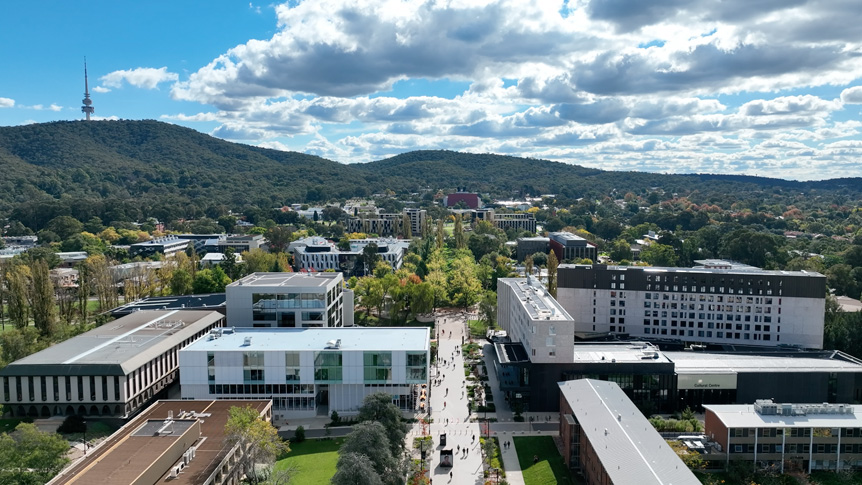Learning Environments Australasia (LEA) is a long-established association of members (including the ANU) representing the design-nexus of education and architecture. The middle ground they represent is an inspiring ‘Learning Space’ for anyone interested in built environments that facilitate learning and teaching partnerships. It goes without saying that LEA objectives are meaningful in the context of a university campus replete with a constantly evolving suite of contemporary ‘Teaching Spaces’ purpose built to enable and enhance the student experience.
Originally planned for 2020, LEA convened (in May 2023) a conference (in Christchurch, New Zealand) appropriately titled: re-Activated. From the outset, it was clear the registrants were keen to patch-up the COVID-related pause in their face-to-face conversations with a series of keynotes, workshops and site-visits. Very briefly, a synopsis of where we are in designing contemporary learning spaces (across all sectors of education) describes a heightened understanding of ‘accessibility’. In the context of learning this means physical buildings should be porous; facilitating a teacher’s need to accommodate diversity and address barriers thereby expanding opportunities for all to learn. Using contemporary interpretations of ‘universal-design’ all learning spaces can be adapted to meet changing contexts – dynamically expressing themselves as truly “learning” environments.
If you’ve been keeping in touch with our local interpretation of ‘Learning Space’ provisioning at ANU, you may have experienced the positive impact of a key initiative associated with the Learning Space Technology (LST) Uplift Project, which aims to deliver “an improved experience for academic and professional staff who use ANU supported learning space technology equipment, benefiting both staff and students”. Through ‘user focused’ initiatives such as this we raise the possibility of taking a technology enabled learning space into the realm of being a technology enhanced learning (TEL) space that teachers and students welcome as a critical partner in their learning experience.
Through the Learning & Teaching Strategy, ANU has committed to creating ‘inspiring learning spaces’ over coming years; the premise being: “For the majority of our students, the campus classroom experience will remain central to what it means to study with us here at ANU. We need those spaces to function well and to reflect the successful integration of educational design and learning space technologies. We need to plan for more exciting and flexible formal and informal learning spaces that can support our active and collaborative learning activities”. Three goals associated with the strategy include:
- classroom technologies being upgraded to a consistent standard
- new and refurbished formal and informal campus learning spaces being designed to foster active and collaborative learning, and,
- future learning and teaching environments being designed to meet the needs of students and staff that reflect the best global trends in learning space design.
With a view to showcasing exemplary Learning Spaces, the ACT branch of LEA has selected the refurbished Birch Building to be a highlight of its Regional Day Out (RDO) on Friday 22 September. The invitational blurb attracting potential attendees reads as follows: “The newly refurbished Birch Building, home of the ANU College of Engineering, Computing and Cybernetics was winner of the 2022 ACT Institute of Architects Canberra Medallion. The building also won National AIA Awards for both Education and Heritage and a National AIA Commendion for Interior Architecture. Working closely with ANU and the College of Engineering and Computer Science, the Hassell team delivered a sustainable design that enables the flexibility and collaboration needed to drive the College’s future while also celebrating the proud history of the building originally designed in 1968 by Eggleston, MacDonald and Secomb. As the first purpose-built engineering facility at ANU, the refurbished Birch Building provides a crucial hub for transformational research and education in engineering and cybernetics. It includes contemporary teaching spaces, learning environments, and state-of-the-art research laboratories.”
Later in the year, the ANU will also feature in the final stages of a Learning Spaces initiative overseen by The Australasian Council on Open, Distance and e-Learning (ACODE). This project was initiated in the closing months of 2021, and in the long-standing tradition of ACODE will offer universities an opportunity to self-assess their own progress relative to other universities across the Australasian region. The proposed Learning Spaces benchmark will sit within the scope of a TEL initiative; as such, it will acknowledge the vital role that digitally supported and connected learning environments play in the creation of accessible learning experiences.
June 2023
Tim Grace is the Manager of the Education Communities team at the Centre for Learning and Teaching.

